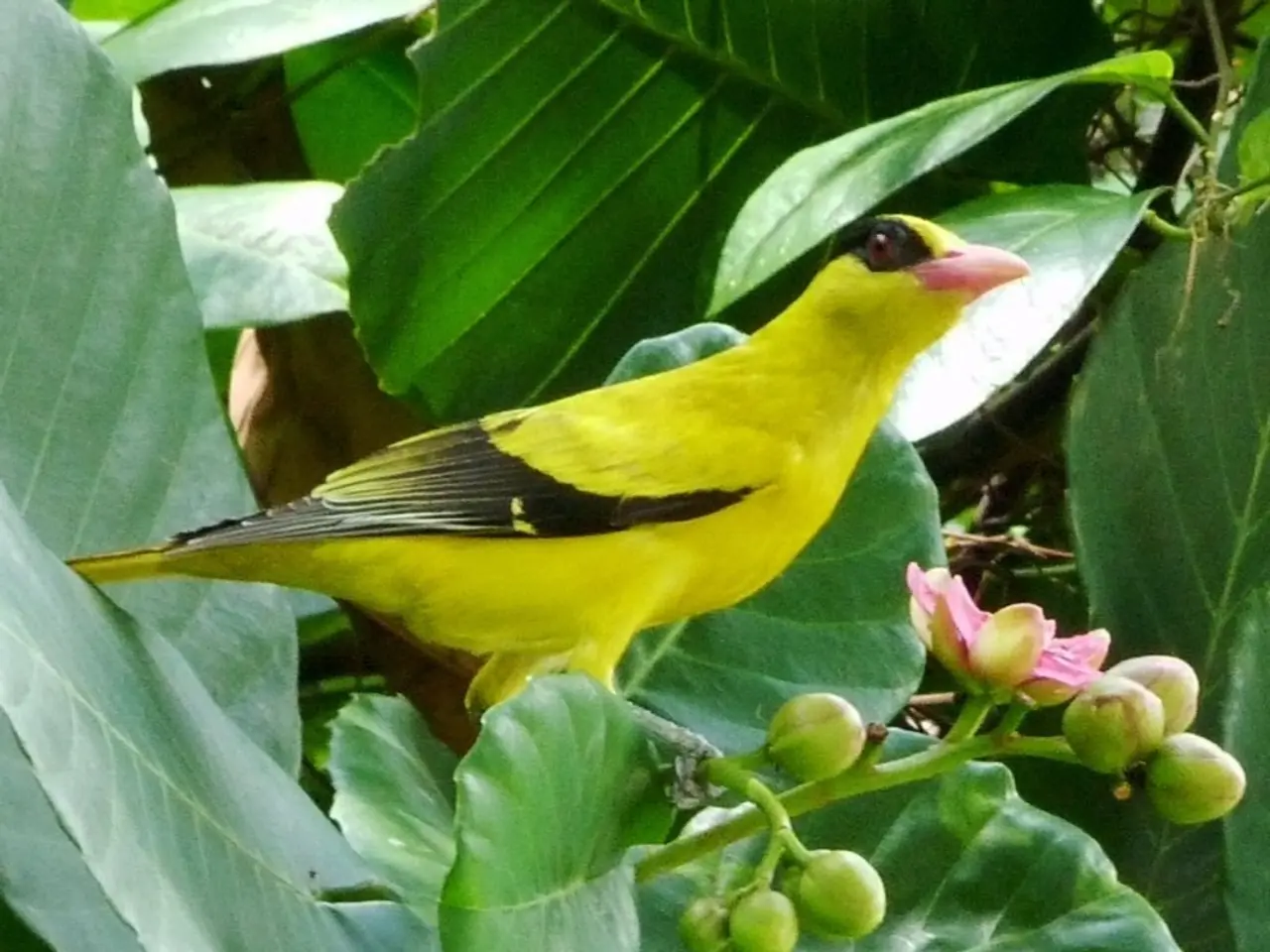Discovering Exquisite Hummingbird Species That Could Frequent Your Backyard
Attracting Hummingbirds to Your Garden: A Guide to Choosing the Right Flowers
Hummingbirds are fascinating creatures, known for their vibrant plumage and remarkable agility. To attract these enchanting birds to your garden, consider planting nectar-rich, tubular flowers that suit your local climate and conditions. Here's a comprehensive guide to help you choose the perfect flowers for your hummingbird haven.
Key Flowers for Hummingbirds
- Cardinal flower (Lobelia cardinalis): A perennial favourite in zones 3-9, this plant boasts scarlet flower spikes that bloom from July to September, thriving in moist soils. Highly favoured by many hummingbirds, especially migratory ruby-throated types, it's an excellent choice for temperate climates.
- Bee Balm (Monarda): This bright perennial blooms in summer with tubular flowers in red or pink shades. It's suitable for temperate to warmer zones and attracts hummingbirds strongly.
- Salvia (Sage) spp.: With various colours and a long bloom time, these drought-tolerant perennials are widely used in various regions.
- Coral Honeysuckle (Lonicera sempervirens): A red-orange perennial vine that thrives in warmer temperate zones, offering an excellent nectar source for hummingbirds.
- Trumpet Vine (Campsis radicans): Known for its large orange-red trumpet-shaped flowers, this perennial vine is noted for hummingbird attraction in many areas, especially in southern U.S. climates.
- Red Hot Poker (Kniphofia): Best for warmer zones, this perennial features flame-like flower spikes and attracts hummingbirds and bees.
- Columbine (Aquilegia): Tubular flowers in various colours, partial shade, and a bloom period from spring to summer make this perennial a good choice for woodland or temperate climates.
- Fire Pinks (Silene virginica): A favourite in woodland gardens, this perennial's bright red tubular flowers attract hummingbirds in cooler, shaded environments.
Regional and Climate Adaptations
- Temperate Northern Zones (3-7): Cardinal flower, bee balm, columbine, and salvia are excellent choices in these zones, providing nectar during hummingbird migration times and blooming well in cooler or variable weather.
- Warmer Temperate to Subtropical Zones (7-9): Coral honeysuckle, trumpet vine, red hot poker, and bee balm thrive here, offering strong nectar sources and bright colours favoured by hummingbirds.
- Woodland or Partial Shade Areas: Monkshood (Aconitum), columbine, and fire pinks suit shaded or woodland gardens and attract hummingbirds that favour cool, protective habitats.
Additional Tips
- Avoid deadheading certain late-blooming varieties during hummingbird migration, as faded blooms still contain nectar critical for their long journeys.
- Prefer native plants whenever possible for best local pollinator support and adaptability.
- Tubular flower shape is crucial for hummingbird feeding, allowing easy access to nectar while excluding many insect competitors.
- Continuous blooming through the season ensures persistent hummingbird visits.
Catering to Local Species
- Allen's hummingbirds, native to the coastal strip of California and southern Oregon, are celebrated for their orange neck patches and green backs. To invite them to your yard, plant fuchsia, monkey flower, and scarlet runner bean.
- Broad-tailed hummingbirds, thriving at elevations as high as 10,000 feet in the Rocky Mountains, can be attracted with alpine favourites like larkspur, red columbine, and silene.
Creating a Hummingbird-Friendly Garden
To make your garden more hummingbird-friendly, plant a variety of flowering plants with staggered bloom times, avoid using pesticides, add a water feature, and attract bugs that hummingbirds like. A hummingbird feeder filled with a simple sugar-water solution is a great way to supplement natural nectar from flowers.
Remember, hummingbirds can adapt to most climates as long as they have access to nectar-rich flowers and clean water sources. Males calliope hummingbirds sport dazzling magenta streaks on their throats, while males of the broad-tailed species have shimmering rose-red throats, contrasting with the more subdued green colouring of females.
By following these tips, you'll create a vibrant and inviting garden that hummingbirds will flock to, providing endless hours of fascination and delight.
- To further enhance your hummingbird garden, consider incorporating decor elements that cater to these pollinators' preferences, such as bright colors or birdhouses.
- As you select plants, keep in mind that a diverse selection of flowers with different bloom times will offer a continuous nectar source, ensuring frequent hummingbird visits.
- In addition to the flowers mentioned, incorporating 'Home-and-Garden' elements like birdbaths and feeders can provide additional sources of water and food, making your garden a more welcoming habitat for hummingbirds and other pollinators.



